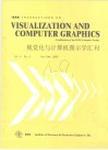版权所有:内蒙古大学图书馆 技术提供:维普资讯• 智图
内蒙古自治区呼和浩特市赛罕区大学西街235号 邮编: 010021

作者机构:Univ Leipzig Inst Comp Sci Augustuspl 10 D-04109 Leipzig Germany Tech Univ Dresden Inst Software & Multimedia Technol Nothnitzer Str 46 D-01187 Dresden Germany Tech Univ Dresden Inst Fluid Mech George Bahr Str 3c D-01062 Dresden Germany
出 版 物:《IEEE TRANSACTIONS ON VISUALIZATION AND COMPUTER GRAPHICS》 (IEEE可视化与计算机图示学汇刊)
年 卷 期:2020年第26卷第11期
页 面:3147-3162页
核心收录:
学科分类:0808[工学-电气工程] 08[工学] 0835[工学-软件工程]
基 金:German Federal Ministry of Education and Research within the project Competence Center for Scalable Data Services and Solutions (ScaDS) Dresden/Leipzig [BMBF 01IS14014B] DFG [FR1593/15-1]
主 题:Feature extraction Data visualization Visualization Stress Heat transfer Strain Solids Flow visualization visualization techniques and methodologies
摘 要:Splat and antisplat events are a widely found phenomenon in three-dimensional turbulent flow fields. Splats are observed when fluid locally impinges on an impermeable surface transferring energy from the normal component to the tangential velocity components, while antisplats relate to the inverted situation. These events affect a variety of flow properties, such as the transfer of kinetic energy between velocity components and the transfer of heat, so that their investigation can provide new insight into these issues. Here, we propose the first Lagrangian method for the detection of splats and antisplats as features of an unsteady flow field. Our method utilizes the concept of strain tensors on flow-embedded flat surfaces to extract disjoint regions in which splat and antisplat events of arbitrary scale occur. We validate the method with artificial flow fields of increasing complexity. Subsequently, the method is used to analyze application data stemming from a direct numerical simulation of the turbulent flow over a backward facing step. Our results show that splat and antisplat events can be identified efficiently and reliably even in such a complex situation, demonstrating that the new method constitutes a well-suited tool for the analysis of turbulent flows.